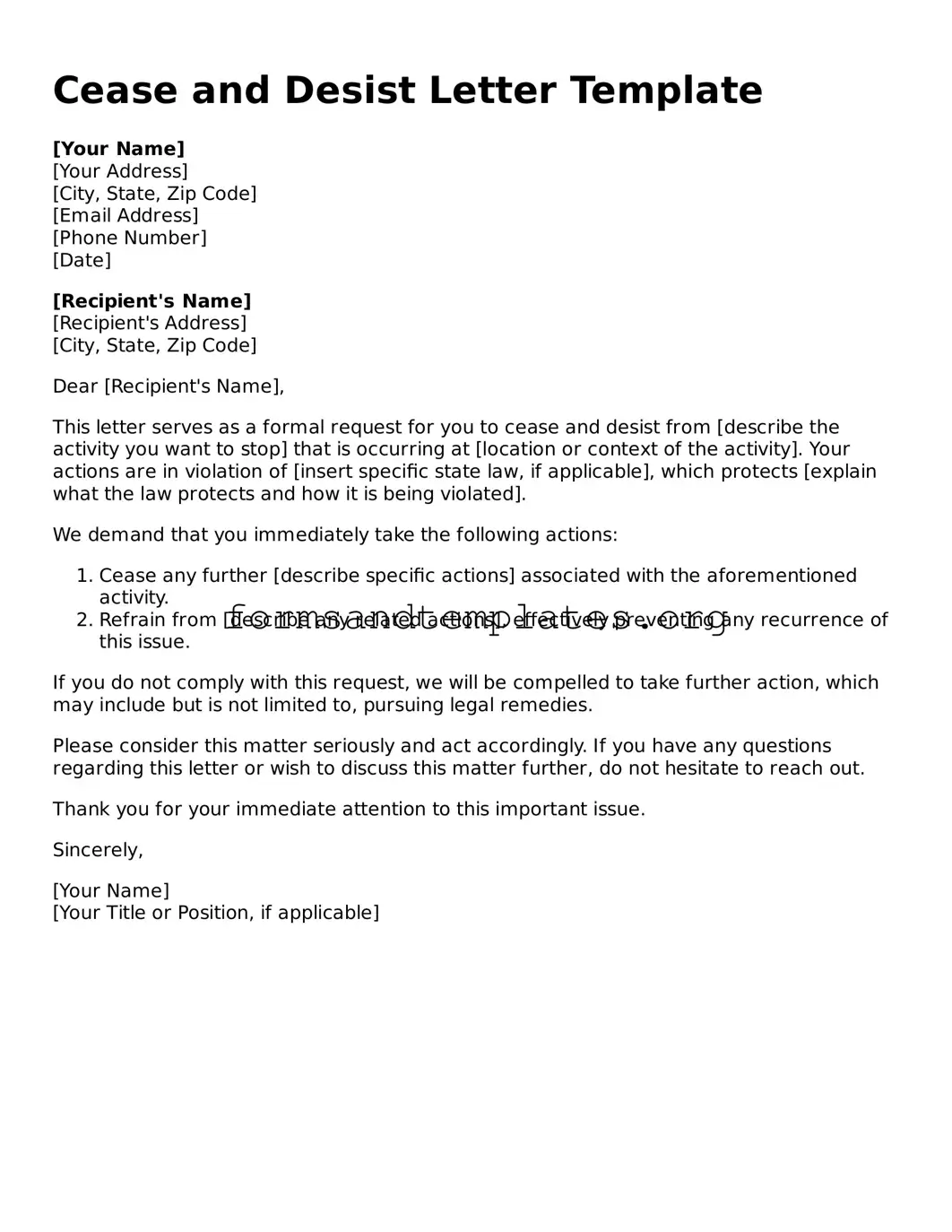Cease and Desist Letter Template
[Your Name]
[Your Address]
[City, State, Zip Code]
[Email Address]
[Phone Number]
[Date]
[Recipient's Name]
[Recipient's Address]
[City, State, Zip Code]
Dear [Recipient's Name],
This letter serves as a formal request for you to cease and desist from [describe the activity you want to stop] that is occurring at [location or context of the activity]. Your actions are in violation of [insert specific state law, if applicable], which protects [explain what the law protects and how it is being violated].
We demand that you immediately take the following actions:
- Cease any further [describe specific actions] associated with the aforementioned activity.
- Refrain from [describe any related actions], effectively preventing any recurrence of this issue.
If you do not comply with this request, we will be compelled to take further action, which may include but is not limited to, pursuing legal remedies.
Please consider this matter seriously and act accordingly. If you have any questions regarding this letter or wish to discuss this matter further, do not hesitate to reach out.
Thank you for your immediate attention to this important issue.
Sincerely,
[Your Name]
[Your Title or Position, if applicable]
